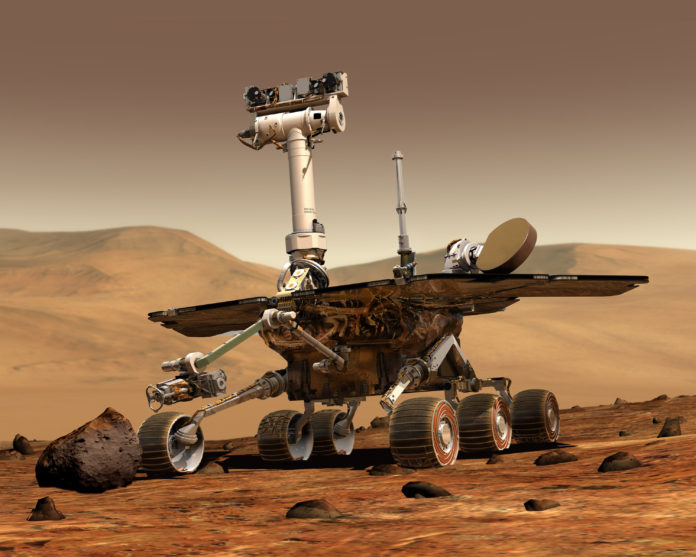Nasa reports it is nearly finished with the construction of a robotic rover that will be used next year to conduct a search of Mars to determine if ancient life existed on a section of the planet. The rover will also be used to further the knowledge base necessary to facilitate deep space missions involving humans.
The official name for the Mars rover will be selected in the early part of 2020. NASA took a moment on Friday to show off the new rover before its scheduled trip to Kennedy Space Center. Once in Florida, the three sections of the rover will be assembled.
The scheduled launch for the rover is in July when it will be sent to examine a dry lake bed on the red planet that is larger than Manhattan.
The 820 feet deep Jezero Crater is the site on the planet that will play host to the new Mars rover. The crater is thought to have once been home to a river the size of Lake Tahoe and the rover will examine it for signs that life once existed there The mission will begin once the rover makes its landing in February 2021. Scientists are hoping fossils will be found in the sediment which is believed to be as old as 3.5 billion years in some places.
The deputy project manager of the 2020 launch, Matt Wallace, explains 30 soil samples will be collected by the rover. The soil samples will be returned to earth where they will be thoroughly searched for trace levels of chemicals that may point to ancient life on the planet.
Wallace says when Nasa is finished with the product it plans to send the sediment back to Mars via a 2026 launch. The deputy project manager says the upcoming mission is essential to future missions that will involve manned spacecraft. Among other things, the Mars rover will carry equipment that is capable of turning the carbon monoxide that is heavily concentrated in Mars’ atmosphere into oxygen that can support human life.
The present rover mission will mark the fifth time NASA has landed a Martian rover if successful. The only other country who has so far landed a rover on the surface of Mars is the Soviet Union. Both China and Japan have attempted to launch crafts that would orbit Mars without success. India and Space Station Europe have successfully placed orbiters around the planet.






